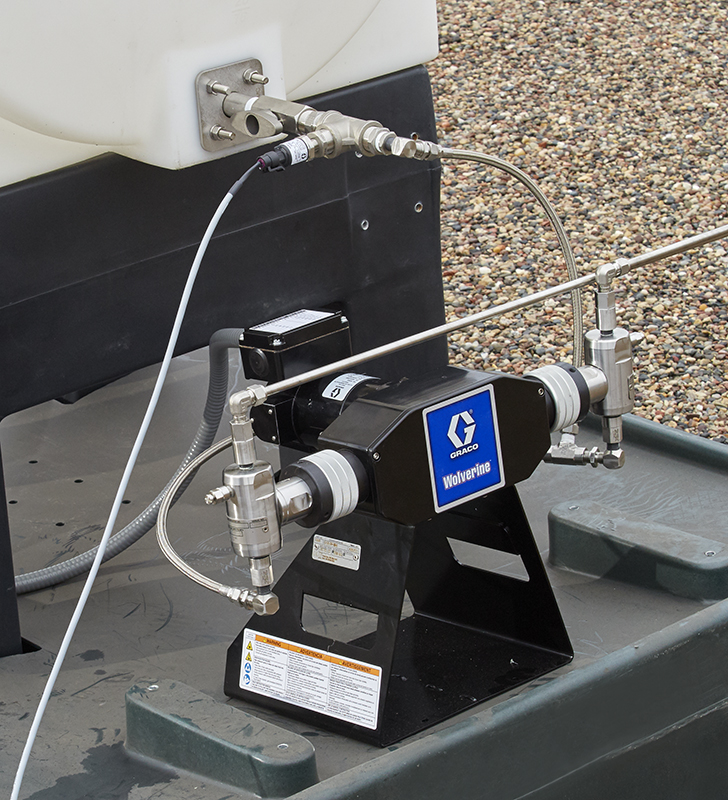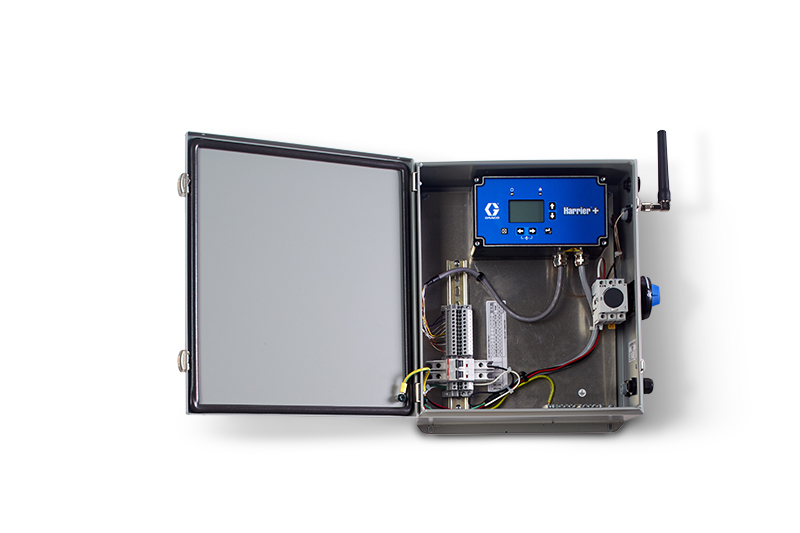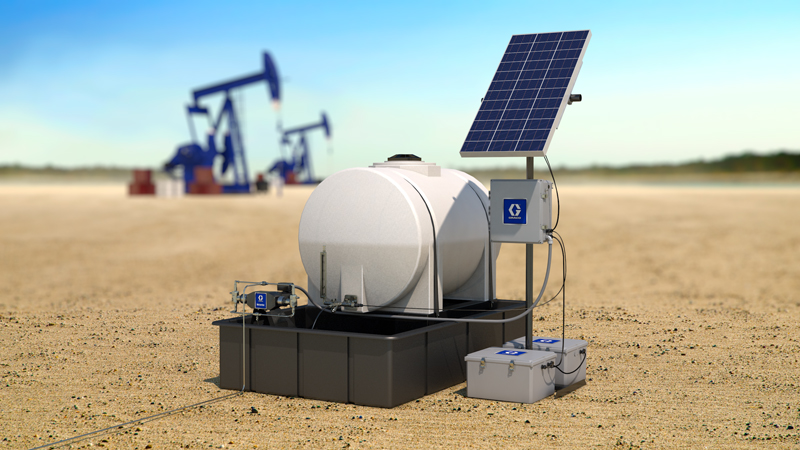PREVENTING HYDRATE FORMATION AND OTHER BLOCKAGES IN PIPELINES WITH CHEMICAL INJECTION
Cold conditions present a unique set of challenges for oil and natural gas infrastructure, with freezing posing a particularly serious problem. When pipeline freezing occurs, ice can cause flow blockages and damage system components. Sluggish flow can reduce volumes traveling through pipelines and increase system-wide pressure spikes.
To ward off freezing problems, many pipeline operators use chemical injection systems, where a precisely controlled amount of methanol or similar chemical is injected into the pipeline or well site. The chemical works as an anti-freeze by reducing the dew point of the methane or water, preventing the forming of line-blocking methane hydrates or ice.
Freezing Conditions
Petroleum pipeline freezing can occur in two primary ways. If water particles are present, ice can form in gas streams at temperatures below 32°F, the freezing point of water. Freezing can also occur with the formation of methane hydrates, which is a particular form of methane-ice that can freeze at temperatures above 32°F, depending on temperature, pressure and specific gas properties.
Pressure drops and flow restrictions can contribute to freezing. As temperatures drop, so do pressures. While a gas flow stream may operate normally with an internal temperature above freezing and an external temperature below freezing, the internal temperature could drop below freezing with a reduction in pressure. If the gas has any water vapor or condensate present, freezing can occur.
Inhibiting Freezing with Technology
A variety of techniques have been used to prevent freezing and hydrate formation. One approach is to remove the free and dissolved water from the system with separators, glycol dehydrators, molecular sieves, or other methods. This technique may not be viable in remote locations, or where access is limited. Temperatures and pressures can be adjusted to prevent hydrates from forming and keeping all phases fluid. This often requires significant operational adjustments and ongoing monitoring and may be impossible on the seafloor or in remote locations.
Chemical injection can offer a dependable, measurable way to ward off freezing. Inhibitors can be injected into the pipeline or wellbore in specific concentrations to reduce the likelihood and occurrence of freezing.
Chemical Injection Pumps
Using modern technology, injected chemicals can be controlled and monitored precisely, often with remote equipment that does not require staff to be on location. Chemicals are dispensed with positive displacement pumps designed to fit various pressure and flow requirements.
Electric pumps are most commonly used, operating off either AC or DC power. Solar DC power can be used in remote areas without line power where the operator cannot utilize well gas for pneumatic power. Pneumatic pumps can run off natural gas or compressed air. They can be used in applications that require hazardous location equipment, do not have accessibility to AC grid power or where solar power is not feasible.

Electric pumps can be powered by solar or conventional power sources.

Pneumatic pumps run off regulated natural gas or compressed air.
Accurate chemical dosing is critical to successful freezing inhibition. Under-dosing can limit effectiveness of the inhibitor, while over-dosing can lead to waste and excess costs. When sizing pumps, it is important to know what the volume and pressure output of the pumps should be as well as the chemical compatibility requirements of the seals.
Controllers Provide Brains
Controllers serve as the “brains” of chemical injection systems, and can be selected based on power requirements, levels of automation desired, and other factors. They can provide a simple time-based control for chemical injection, cycle control or an adaptive flow control process which improves accuracy and provides flow assurance. Injections can be controlled by a variety of input 4-20mA sensors; the most common is temperature, with pumps switched on at a certain temperature and off at another temperature. Remote system monitoring and control is also available, with oilfield automation features including tank level monitoring, pressure, flow & temperature measurement and leak detection.


Controllers are available for both AC (left) and DC (right) power sources.
Complete Chemical Injection System
To complete the chemical injection system, other components could include a solar panel, stand, batteries, and charge controller if solar power is used. Other components could also include chemical storage tanks, piping, fittings, calibration column and various other accessories. Please note that Graco does not supply chemical tanks or containment units.

A chemical injection system in use at an oilfield site
References
“How To Prevent Freezing In Gas Pressure Reducing Systems: Part One,” https://www.lowflowvalve.com/prevent-freezing-gas-pressure-reducing-systems-part-one/
“Freeze Protection for Natural Gas Pipeline Systems and Measurement Instrumentation,” Tom Fay, Welker, Inc. https://asgmt.com/wp-content/uploads/pdf-docs/2011/1/T06.pdf
“Preventing Formation of Hydrate Plugs,” PetroWiki, https://petrowiki.org/Preventing_formation_of_hydrate_plugs




